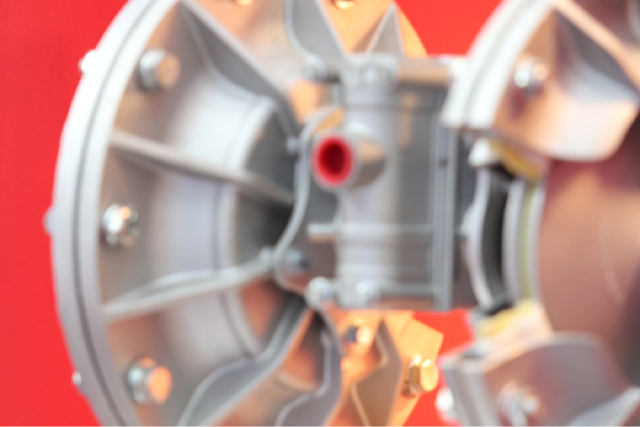An Overview Of The Pros and Cons Of Diaphragm vs Plunger Pump

Those searching for the best displacement pumps often narrow their choices to an electric diaphragm pump or plunger pump. If you are in the same boat, you’d naturally want to know which is the better choice for your application. First, it is important to know that there are stark differences between the two in terms of performance and the use cases they are best suited for. While certain manufacturers often configure both pump designs into different kinds of equipment models, they are not easily interchangeable without making some compromises.
Read on below for a brief overview of how each pump functions and the pros and cons that separate them.
How it works: diaphragm pumps and plunger pumps
Although diaphragm and plunger pumps are both reciprocating pumps, the former has a flexible diaphragm connected at the end of its plunger that flexes back and forth. Meanwhile, a plunger pump is a simpler mechanism that only uses a reciprocating piston or plunger to force liquids through valves.
An example of a naturally occurring diaphragm pump is the heart found within the human body. Plunger pumps are present in many everyday objects, such as spray bottles, bicycle pumps, and squirt guns.
Diaphragm pumps are beneficial in various applications, such as commercial uses and are more commonly suited for low PSI applications like transferring fluids and dewatering. In contrast, plunger pumps handle high-pressure use cases in pest control, agriculture, disinfection, sanitation, and more. These pumps are often configured into electrically-powered equipment like sprayers, pressure washers, and misters.
Lastly, diaphragm and plunger pumps also differ in their power source. Both diaphragm and plunger pumps can be powered by either an electric-powered motor or a gas-powered engine. Diaphragm pumps generally need to be gas-powered to achieve the desired power and output required for most professional uses.
Pros and cons
1. Priming
Diaphragm pumps and plunger pumps are self-priming designs and unlike centrifugal pumps, which need priming to purge air from the pump chamber to prevent it from becoming inoperable.
2. Spray patterns and flow
Gas-powered diaphragm pumps tend to have flexible components that cause their flow to be “flexible”. This leads to them having inconsistent spray patterns and losing pressure, a major concern in applications that use harsh chemicals such as soft washing, disinfection, and more. However, this is not the case for its electric counterparts, which can deliver consistent flow rates and pressure for various fluids.
Electric-powered plunger pumps also output the same stable flow made possible by a pressure regulator. The other rigid components in this pump system also help dispense liquids at a fixed and steady flow rate, letting operators achieve even and consistent coverage.
3. Noise level
Pumps powered by 12V battery motors produce far less noise than gas engines, making them ideal for industries like pest control, where it is important to quietly do the job. While gas engine diaphragms are still viable for the same applications, noise ordinances may limit the hours they can operate.
4. High-pressure capabilities
The flexible components in certain diaphragm pumps model, specifically the diaphragm itself, are prone to rupturing over time if used in high-pressure applications. Thus, for organisations still using diaphragm pumps for these use cases that it was not designed for, it is best to switch to a more durable plunger pump that is engineered for such repeated high-pressure use.
5. Run times
Battery technology has made significant advancements in recent years, and modern 12V plunger pump systems can now outlast the capacity of many gas-powered diaphragm pumps. This eliminates the need to pause and refuel during a job and transport such volatile substances to the work site, improving overall safety.
Apart from battery technology, another aspect where electric plunger pumps surpass gas-powered diaphragm pumps is their efficiency. Users can operate electric plunger pumps for a whole day on a single charge and easily recharge the battery while driving between jobs.
Conclusion
When deliberating on which of the two highly reliable pump designs to choose, the right decision ultimately falls on which of the factors above meets your needs, along with many others, including versatility in handling different fluids, energy efficiency, size, maintenance requirements, and so on.
If you have decided which pump to go with, Winston Engineering can help you get your hands on exactly what you need. As a premier pump supplier in Singapore, we offer an extensive range of quality pumps and other machines geared for industrial and commercial purposes, including wet and dry vacuum cleaners, air compressors, and high-pressure washers. For more details about our products, browse our online catalogue or contact us today.

